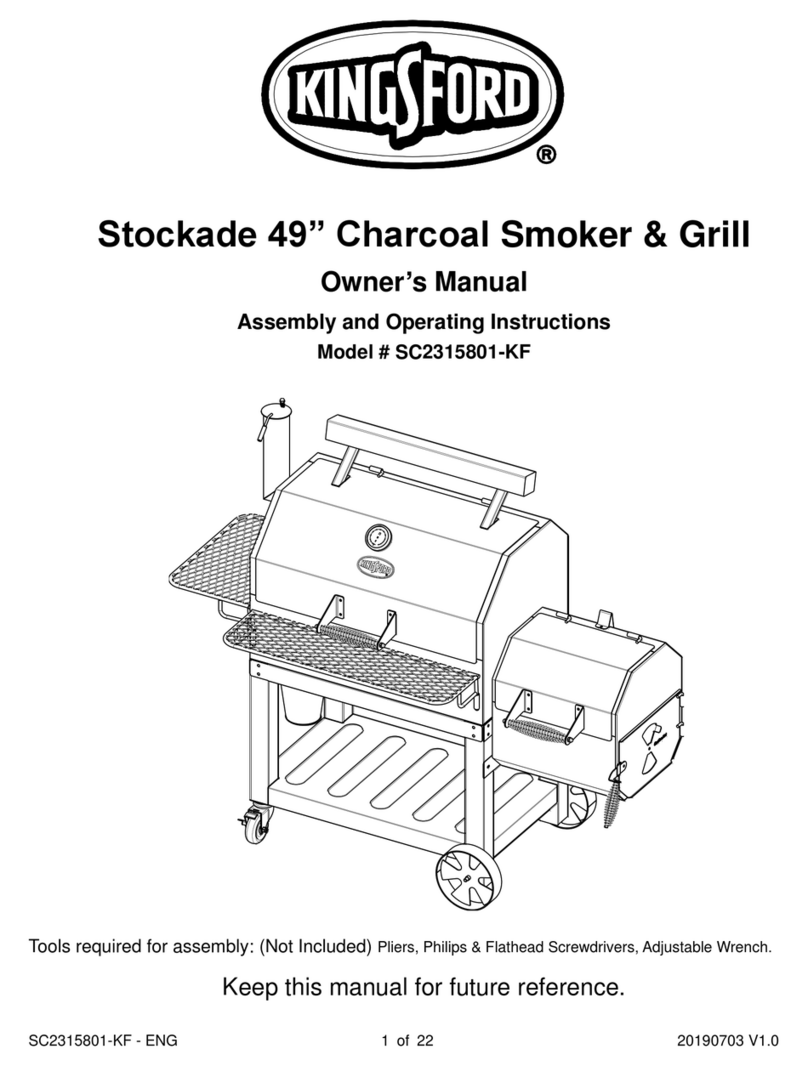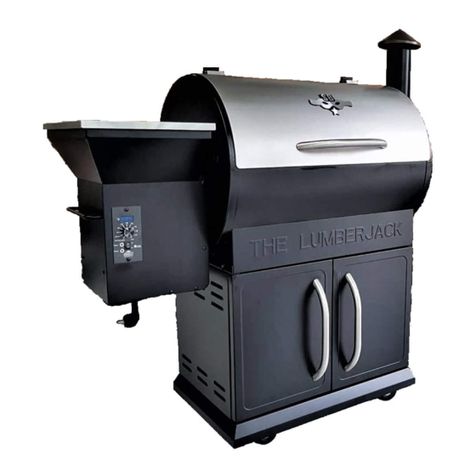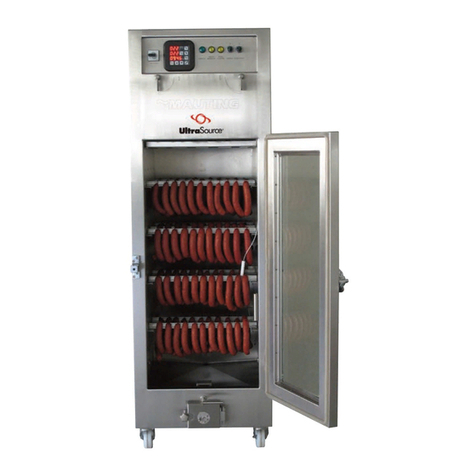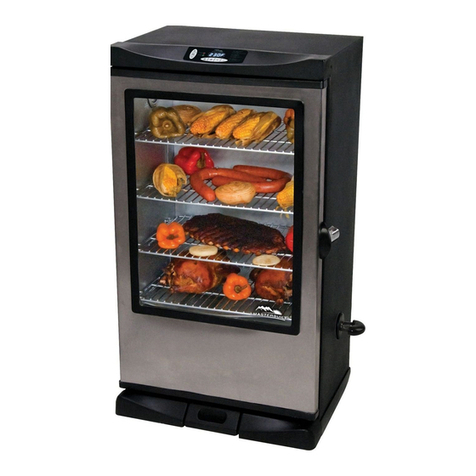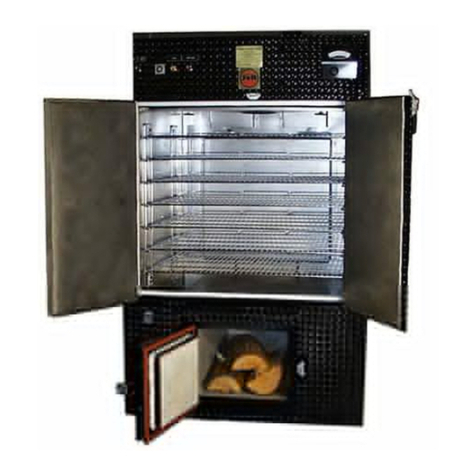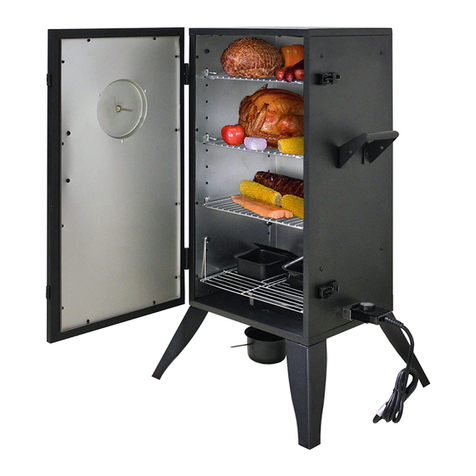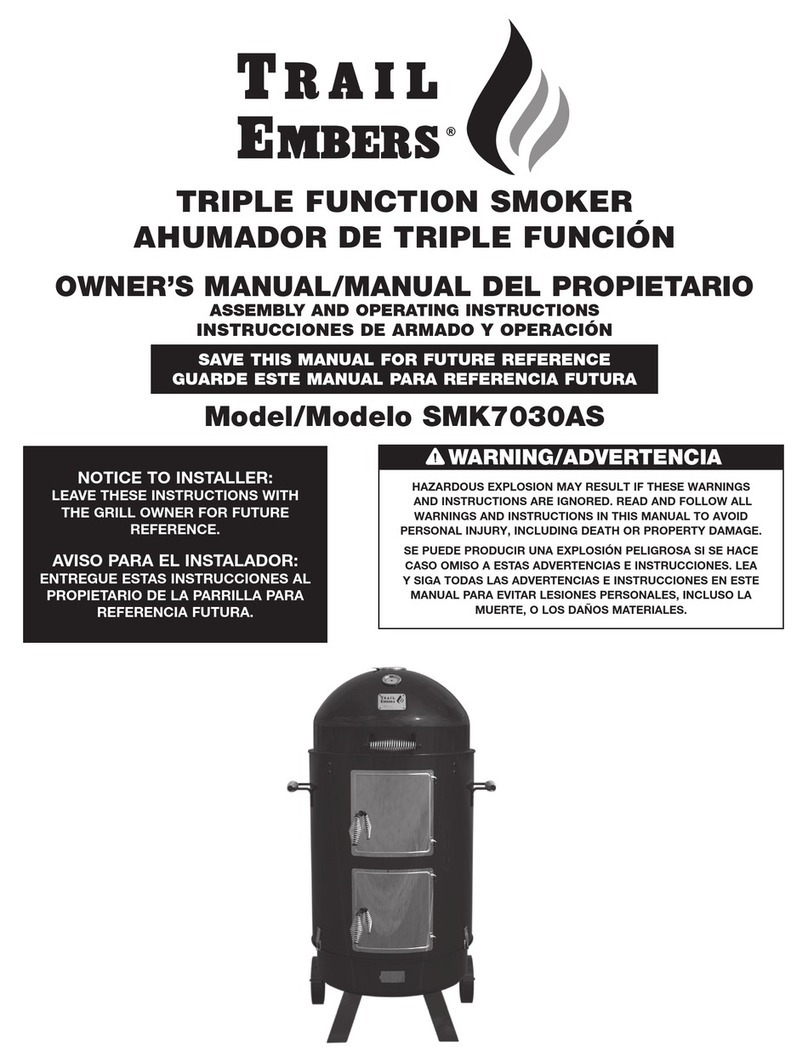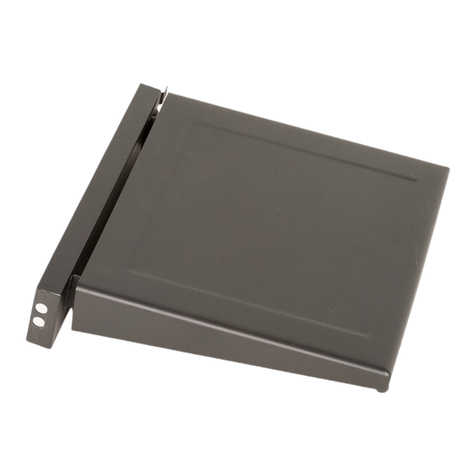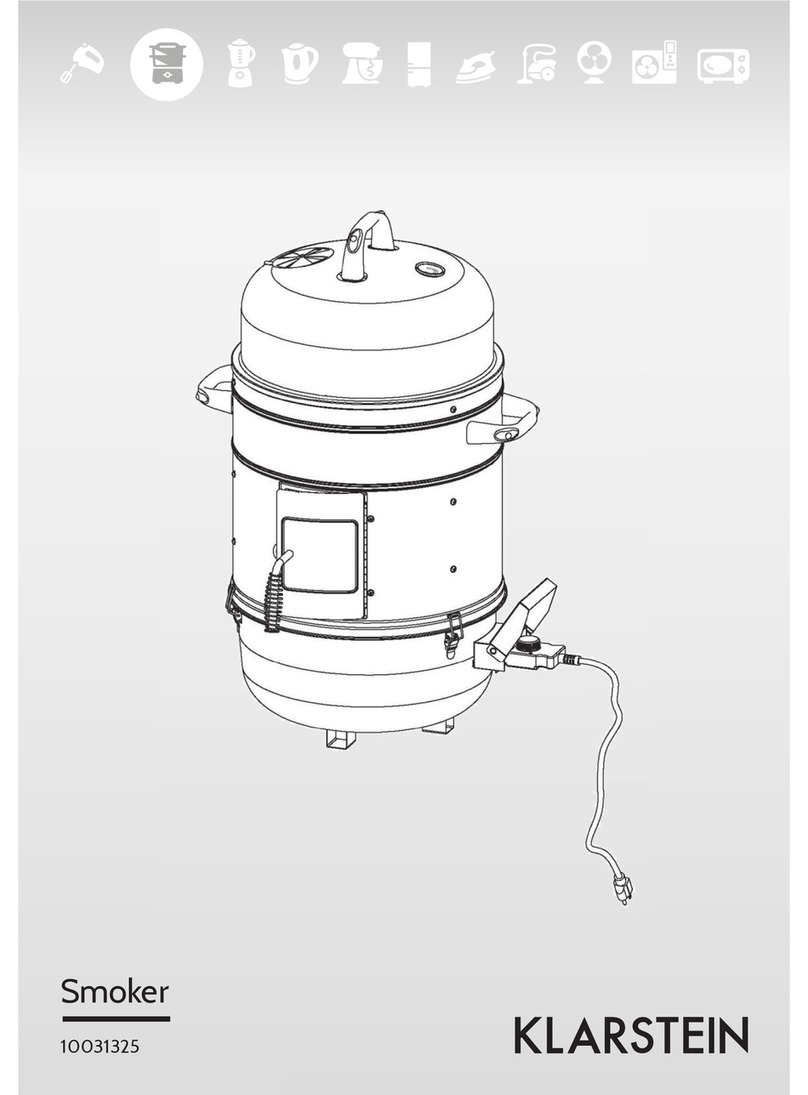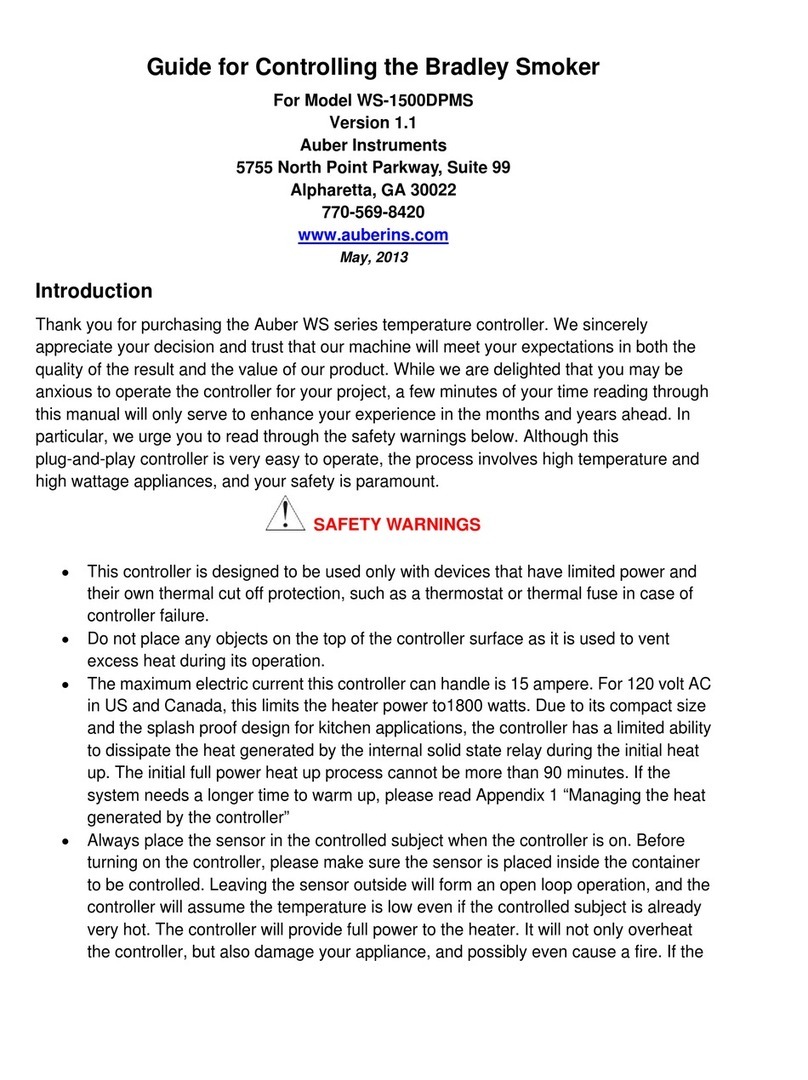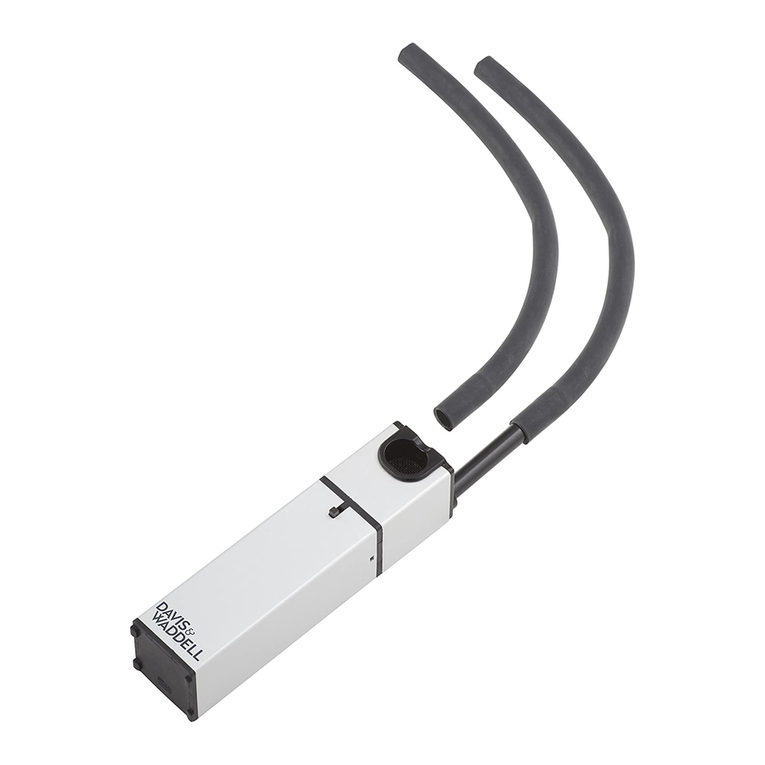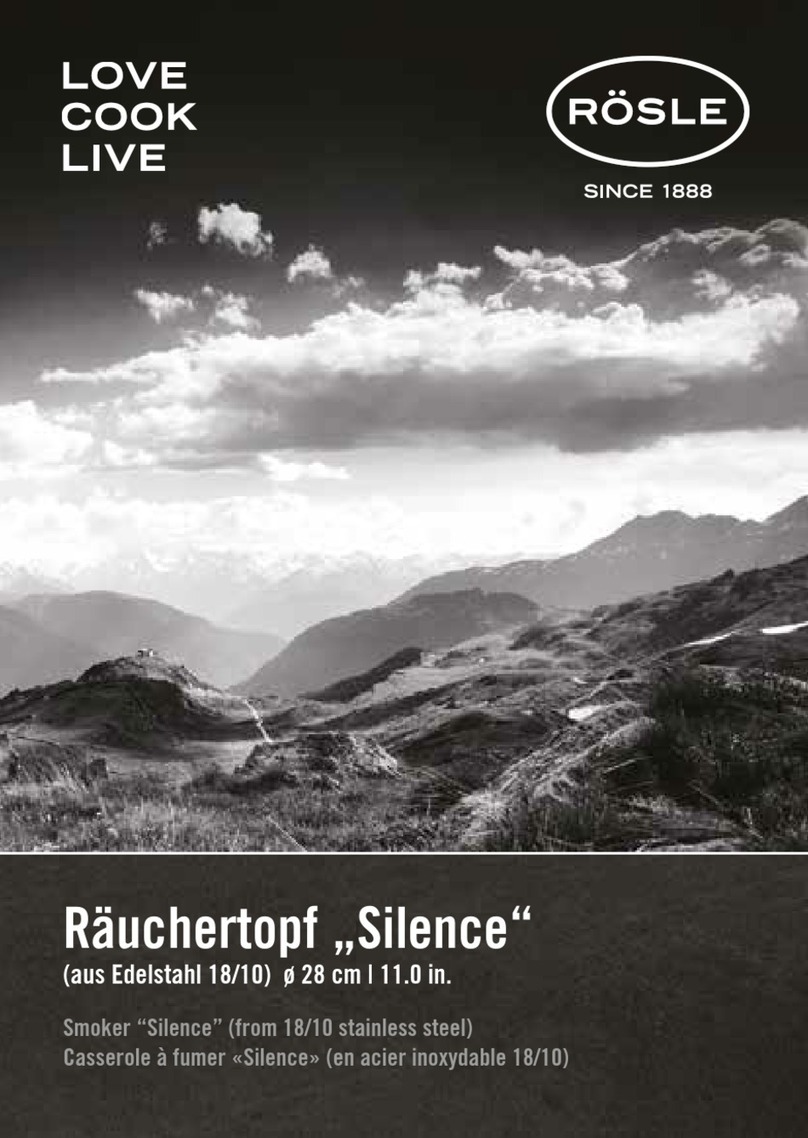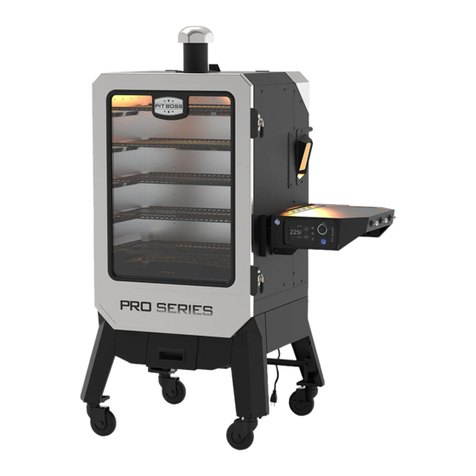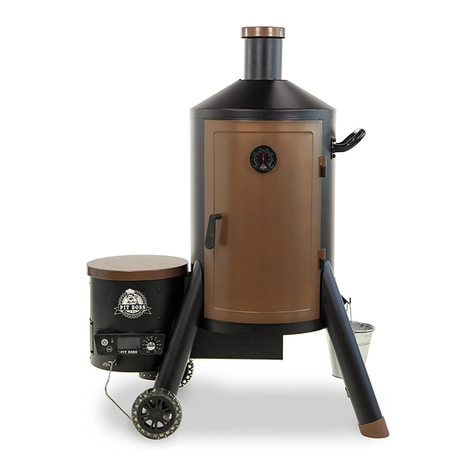
INSTALLATION INSTRUCTIONS
SHIPPING
The Custom Rotisserie will be shipped fully assembled. The spits will be packed inside
the cooking compartment.
HANDLING
The unit can be handled with a forklift with a 6,000 pound capacity. The extra
capacity is necessary due to the size of the unit.
There is an optional drain connection on the left or right hand side of the unit. This
drain is used for draining grease and/or water and for cleaning the cooking
compartment. The unit’s drain should be piped into a floor drain.
ELECTRICAL REQUIREMENTS
OPTIONAL DRAIN CONNECTION (Not applicable to all solid fuel fired units)
GAS PIPING (Not applicable to all solid fuel fired units)
Back and sides: 0
Front: 48
From non-combustible walls:
From combustible walls:
If this appliance is to be used with casters, please note the following:
The gas connection must be made with a connector that complies with the Standard for
Connectors for Movable Gas Appliances, ANSI Z21.69: CSA 6.16, and a quick-disconnect
device that complies with the Standard for Quick-Disconnect Devices for Use With Gas
Fuel, ANSI Z21.41; CSA 6.9. Adequate means must be provided to limit the movement
of the appliance without depending on the connector and quick-disconnect device or
its associatedpiping to limit the appliance movement. Use the hole provided in the base
frame of the unit to attach a movement limitationdevice (for example, a steel cable secured
to the building structure).
The unit requires a 115 volt, 1 phase, 15 amp electrical service. A switch or circuit
breaker should be installed near the unit. It will be necessary during certain
maintenance procedures to shut off the electrical supply. At these times, it is a good
safety procedure to tag the switch to guard against someone re-energizing the
circuit. Your electrician should extend a conduit from the unit’s junction box to
a 115 volt supply in your building using a grounded circuit. Please refer to your
local electrical code for any other requirements. Connect at junction box only.
the gas supply (including a gas line supply valve) to the gas connection on the
unit. Use a UL approved pipe joint compound. Check for leaks with a soap solution
(do not use a flame). If there are no leaks, light any standing pilot burners by following
the instructions on the gas safety valve. Turn on the burners and check all piping
connections for leaks.
Connect
CLEARANCES:The installation must conform to the following min.clearances (inches):
Back and sides: With no upper enclosure panels: 48
With upper enclosure panels: 2
Front: 48
The unit can only be installed on a non-combustible floor.


